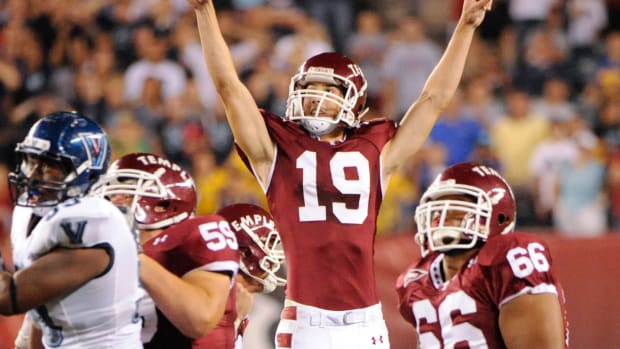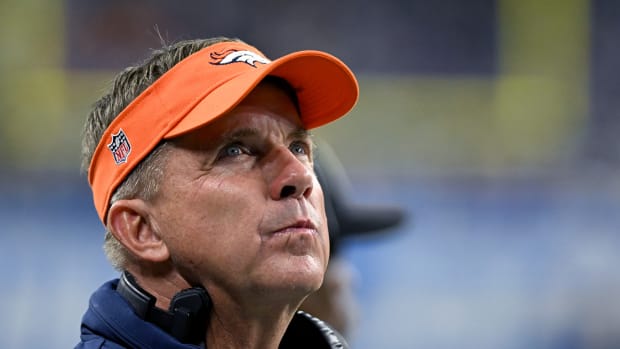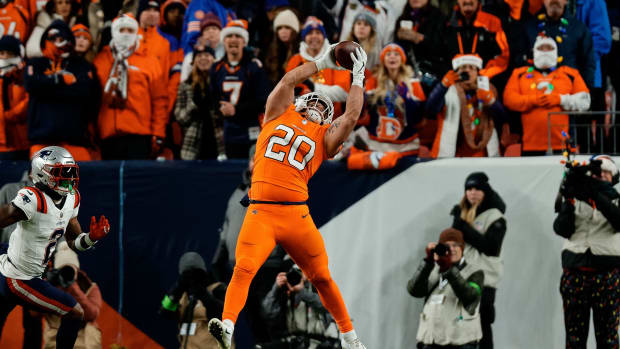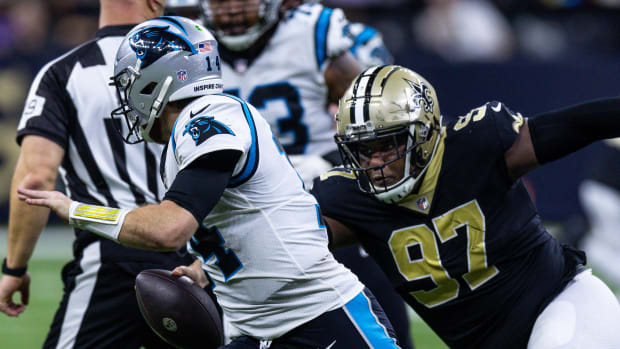Analytics Reveal Broncos Aren't Utilizing Pre-Snap Motion Nearly Enough
In the game of football, pre-snap motion is a wonderful thing, especially for younger quarterbacks still growing and developing for the NFL. But does it lead to more offensive success?
With the NFL entering Week 8, there is plenty of data to divine the answer. I'm going to break down some analytics but it's worth noting that these metrics don't take into consideration the Week 8 Thursday night game.
The Denver Broncos need to need to use more motion pre-snap for Drew Lock because of how it can help him. Not only could it help the embattled quarterback stabilize and help provide him with crucial information before the ball is snapped, but the data suggests utilizing motion could help the Broncos out in the standings.
NFL's Best Teams Use Pre-Snap Motion
When it comes to the percentage of plays with pre-snap motion, only one team in the top-10 has a losing record — the Washington Football Team. Washington has had multiple changes at quarterback, though. These teams' records are a combined 45-20, or 43-15 without Washington and they average pre-snap motion on 22% of plays, with the Baltimore Ravens leading the way at 37.7%.
When you expand to the top-16 in pre-snap percentage, four more teams with a losing record are included; the Eagles, Patriots, Texans, and Chargers. Carson Wentz and the Eagles have been dealing with injury issues to at wide receiver and don't have any of their top guys currently.
New England's Cam Newton has his issues as a passer, while Houston's Deshaun Watson and Los Angeles' Justin Herbert have other variables in play like questionable coaching for the former and excellent individual play for the later, but both continue to get let down by their respective defenses and special teams. Pre-snap motion helps these young QBs, especially Watson and Herbert.
Pre-Snap Motion Reluctance Corresponds to a Losing Record
The top-16 teams are a combined 61-41-1 on the season, averaging 18.5% of plays with pre-snap motion. The lowest usage of pre-snap in the top-16 still uses it on 11.3% of plays. When you get to the bottom-16, the numbers are interesting.
The bottom-16 NFL teams in pre-snap motion percentage are a combined 43-63-1, nearly flipping of the win-loss ratio of the top-16. That's a difference of 18 wins, which could suggest differences in how these teams are both utilizing and prioritizing pre-snap motion.
Only three of the bottom-16 teams are over 10% of plays with pre-snap motion and two of them have winning records. These two teams are quarterbacked by Kyler Murray and Nick Foles, respectively. Ryan Tannehill and the Titans are also in the bottom-16, but not the bottom-10, using pre-snap motion on 7.4% of plays.
The Broncos fall right at No. 23 with only 7.3% of plays utilizing pre-snap motion. The lowest team sits at 2.9% and they're 1-6. So let's get into the bottom-10, which is where Denver falls.
There are only two teams with a winning record, the Browns led by Baker Mayfield, carried by the running game, and the Bucs, quarterbacked by Tom Brady. The bottom-10 teams are a combined 23-44. On average, they run pre-snap motion on 5.5% of their plays.
The three teams in 2019 who used motion the most? You probably won't be surprised to learn that it was the Baltimore Ravens, San Francisco 49ers, and Kansas City Chiefs.
What it Means for Denver
It's obvious that the Broncos aren't running enough motion. Doing so could provide Lock with a lot of information pre-snap, telling him what coverage the opponent is in and helping to keep the defense on its heels. There's a reason the success rate on plays with motion across the NFL is over 60% and for the Broncos, it's just over 65%.
So why isn't offensive coordinator Pat Shurmur utilizing pre-snap motion more often? It's something that proved to work for teams in 2019 and the data so far for 2020 suggests the same.
It could be an issue of how young and inexperienced the offense is. Adding pre-snap motion, while it gives your quarterback a lot of information, could lead to mistakes from the young receivers, including penalties. Whatever the reason may be, there needs to be more pre-snap motion utilized in Denver.
This is one area that Shurmur must improve to help Lock. It may even help Lock come off his first read more often, and go through his progressions, which has been his biggest issue to date. This isn't just for passing plays either.
Pre-snap motion actually has a higher success-rate differential for running plays than it does passing plays. Again, it's about getting more information to the players on the offense before the ball is snapped and giving themselves a better chance to succeed.
Denver has a higher yards-per-rush average, as well as a higher success rate, on plays utilizing pre-snap motion. Shurmur has to start using it more frequently.
If the Broncos' coordinator is afraid of hurting the offense, let's face it; it can't get much worse than what it's been of late. The data suggest the Broncos' offense does better with it, which puts the onus on Shurmur to recognize that fact and start adjusting the scheme to include pre-snap motion.
The Broncos lost their true bye week this year, which is a period of time off that teams use to self-scout and identify trends and tendencies in themselves. Shurmur won't get that opportunity this year but the analytics are still there to be interpreted and utilized.
Follow Erick on Twitter @ErickTrickel and @MileHighHuddle.




